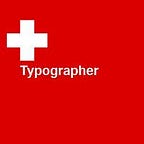The three pillars of accessibility
Accessibility means different things to different people but accessibility is not just a single thing. We can broadly divide it into three pillars: emotional, functional and technical. Each pillar must be accessible in itself but all must be considered together. We also have to accept that accessibility can never be perfect but it can be optimal.
The principle of the three pillars of accessibility can be applied to any type of work and is not limited to a specific industry. This is a guide to better understand the role of each:
Emotional accessibility is the first impression a person experiences when presented with a service or product. Does that person react positively or negatively, do they feel invited or rejected; in short, does the reaction meet the expectations of the original intent? Emotional accessibility and acceptance is a crucial incentive for the person to engage with the service or product. Without it, functional and technical accessibility are largely redundant.
Functional accessibility defines whether a service or product is designed in such a way that a person can easily understand and manage it. Does the person experience obstacles that prevent them from achieving the task presented to them? Functional accessibility must support the user in order for a service or product to be successful. Without functional accessibility the service or product is set to fail in the long term.
Technical accessibility refers to physical and software products that are engineered in such a way that they can fulfill the functional accessibility expectations. Does the user of a product experience limitations in accessing the product because of inherent faults in the product? A product that is compromised technically cannot support either of the other two accessibility components and the entire product fails.
The above description of the three pillars of accessibility can be applied to any human output but at The Readability Group we are concerned with accessibility in typography, from the choice of typeface and how written content is formatted. We are concerned with legibility and readability, and how these two are different, yet closely related. We are working to bring about a better understanding of how typography helps with better communication through research and studies. The findings of our work will provide the platform for informed discourse and definition of standards that at present are woefully inadequate and in some cases plain wrong.
Follow the @ReadabilityGrp for regular insights and discussions about accessibility in typography.
